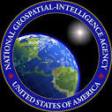NGA posts RFI for geospatial mapping of ambient sounds
 On April 27, the National Geospatial-Intelligence Agency posted a request for information for geospatial mapping of ambient sounds. Responses are due by 3:00 p.m. Eastern on June 7.
On April 27, the National Geospatial-Intelligence Agency posted a request for information for geospatial mapping of ambient sounds. Responses are due by 3:00 p.m. Eastern on June 7.
As part of its market research, The National Geospatial-Intelligence Agency (NGA) Research Directorate’s Environment and Culture pod is seeking information on how an interested contractor can leverage new and emerging technologies to characterize spatial-temporal patterns in sounds and develop corresponding foundational geospatial datasets.
The purpose of this Request for Information (RFI) is to seek information on automated approaches, using both traditional and non-traditional data sources and analytics. RFI responses should include methodologies based on research as well as novel technologies.
Background
Recent advances in the fields of acoustic and soundscape ecology have demonstrated new applications for recording, classifying, and mapping ambient sounds and acoustic features. For example, methods for collecting and analyzing sound waves over smaller areas have proven useful for detecting and classifying gun shots and different species of animals, birds, and insects. Other research efforts have leveraged open source data and crowdsourcing to develop global soundscapes of anthropogenic and environmental sounds, and features derived from those sounds.
The focus of this RFI is to identify and understand capabilities to accurately and automatically produce baseline soundscapes for locations worldwide. Responses should address one or more relevant areas of interest:
-
New and existing data sources for geotagged audio data, including sounds within and near the audible range
-
Approaches for categorizing classes of sounds at different spatial and temporal scales
-
Approaches for developing aggregate acoustic signatures of places
-
Approaches to define baseline temporal patterns of acoustic signatures
-
Methods for matching sound data from unknown locations to potential places of origin
-
Methods that incorporate or identify relationships between acoustic data and other types of geospatial feature data, such as sounds and temporal patterns related to specific points of interest or building usage
-
Data models and scalable architectures to efficiently collect, store, and geospatially analyze acoustic and ambient sound data at multiple spatial scales
-
Validation and verification of algorithm performance under different sampling conditions
-
Navigation, augmented reality, and accessibility applications of sound localization and classification
-
Novel use cases for recording, classifying, and mapping ambient sounds and acoustic features
Full information is available here.
Source: FedBizOpps








